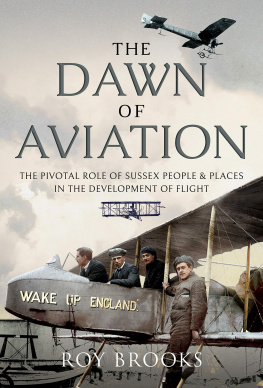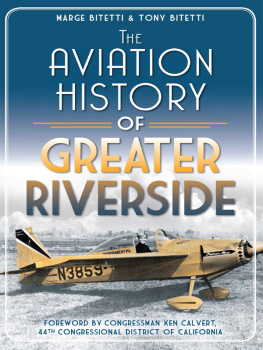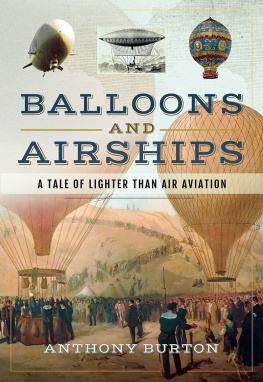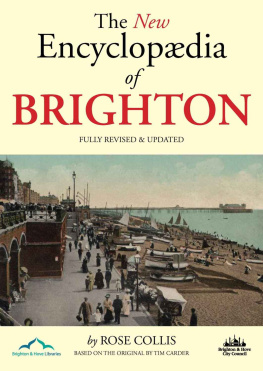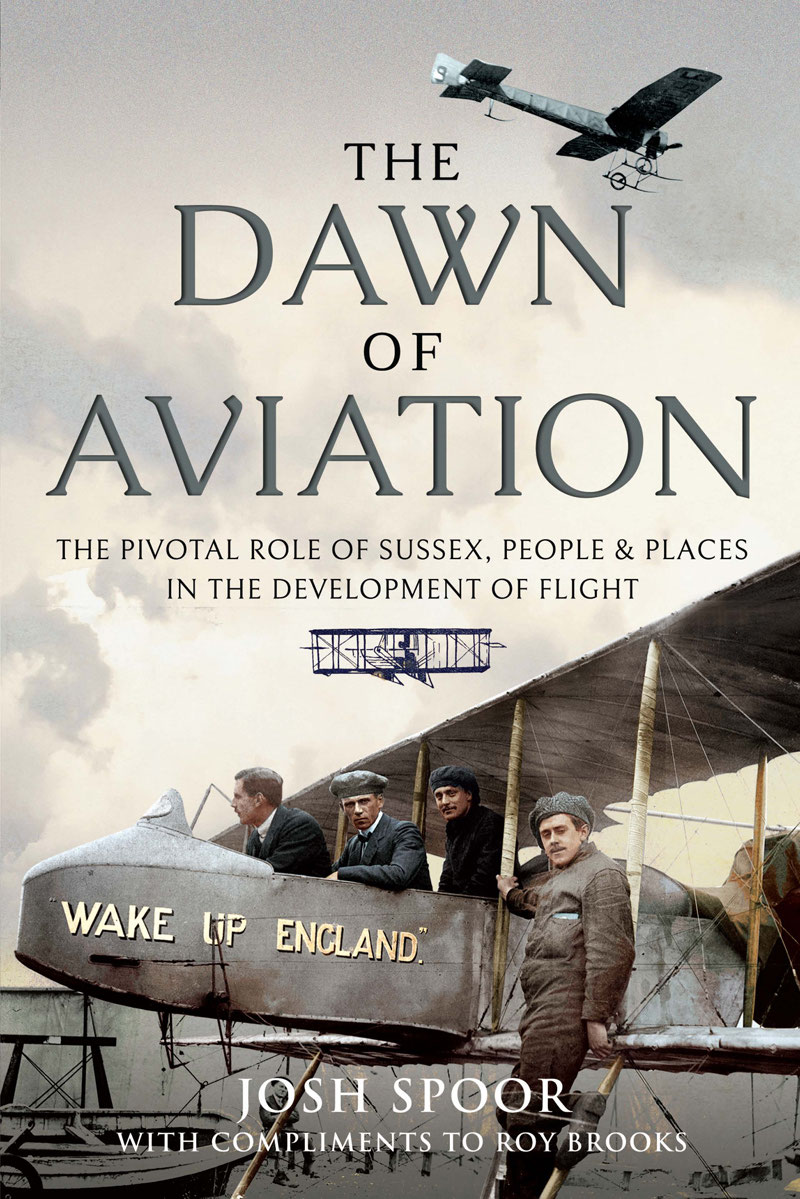Roy Brooks - The Dawn of Aviation: The Pivotal Role of Sussex People and Places in the Development of Flight
Here you can read online Roy Brooks - The Dawn of Aviation: The Pivotal Role of Sussex People and Places in the Development of Flight full text of the book (entire story) in english for free. Download pdf and epub, get meaning, cover and reviews about this ebook. City: Barnsley, year: 2021, publisher: Air World, genre: History. Description of the work, (preface) as well as reviews are available. Best literature library LitArk.com created for fans of good reading and offers a wide selection of genres:
Romance novel
Science fiction
Adventure
Detective
Science
History
Home and family
Prose
Art
Politics
Computer
Non-fiction
Religion
Business
Children
Humor
Choose a favorite category and find really read worthwhile books. Enjoy immersion in the world of imagination, feel the emotions of the characters or learn something new for yourself, make an fascinating discovery.
- Book:The Dawn of Aviation: The Pivotal Role of Sussex People and Places in the Development of Flight
- Author:
- Publisher:Air World
- Genre:
- Year:2021
- City:Barnsley
- Rating:5 / 5
- Favourites:Add to favourites
- Your mark:
The Dawn of Aviation: The Pivotal Role of Sussex People and Places in the Development of Flight: summary, description and annotation
We offer to read an annotation, description, summary or preface (depends on what the author of the book "The Dawn of Aviation: The Pivotal Role of Sussex People and Places in the Development of Flight" wrote himself). If you haven't found the necessary information about the book — write in the comments, we will try to find it.
These early activities attracted much attention, with some 30,000 people gathering at Black Rock in Brighton, as well as on the surrounding hills, to watch the first balloon ascent from the town in July 1821 using coal gas from the recently opened gas works. That particular balloonist, Charles Green, later became immortalized by Charles Dickens in his Sketches By Boz.
The military were quick to appreciate the potential benefits of aerial observation and in 1880 balloons were deployed for the first time at the annual Volunteer Review at Brighton. Often wind conditions were not favorable for balloons, which prompted the army to consider employing kites and in June 1903 an international competition was held on the South Downs near Findon to see if kites could lift a man into the air. While this was found to be possible, it proved a terrifying experience for the unfortunate pilots.
Before powered flight became a reality, it was gliders which were the first heavier than air machines to take to the skies. In 1902 Mr Jose Weiss began launching unmanned gliders off a ramp at Houghton Hill near Amberley, which flew up to two miles. But soon the internal combustion engine made powered, controlled flight a reality and on 7 November 1908, Alec Ogilvie flew a Wright Brothers biplane along the coast at Camber.
By the time war broke out in 1914, the people of Sussex had seen the Brooklands to Brighton air race and the establishment of flying schools at Shoreham and Eastbourne. After the Armistice, aviation started becoming increasingly expensive and increasingly regulated. The halcyon days of swashbuckling amateurs taking to the skies in untested contraptions was drawing to a close.
Roy Brooks: author's other books
Who wrote The Dawn of Aviation: The Pivotal Role of Sussex People and Places in the Development of Flight? Find out the surname, the name of the author of the book and a list of all author's works by series.

